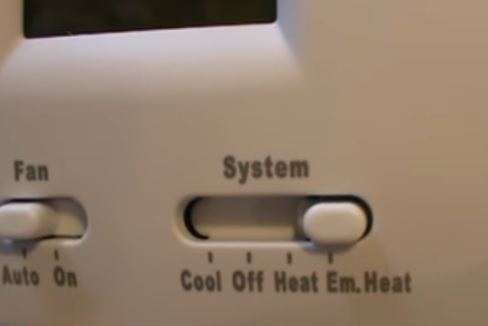
A thermostat with EM. Heat option, is short for Emergency Heat.
Emergency heat is separate from the standard heating system and should only be used when a house is very cold.
When EM. Heat is used power usage will go up quickly, which will, of course, will show up on a power bill.
Emergency heat is also sometimes called secondary heating or auxiliary heating source.
What is Emergency Heat?
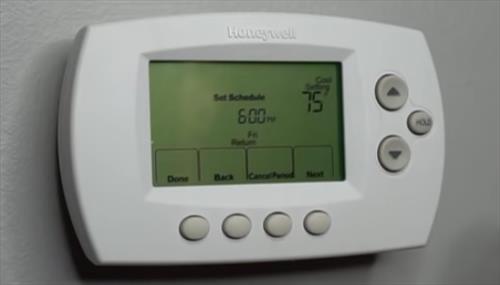
Emergency Heat turns on when the standard heating and cooling system is not working.
EM. Heat is most commonly used in heat pump systems and rarely used in gas systems.
When working properly, it is will briefly to send heat into a home when a heat pump is in defrost mode.
While it can also be used at any time when turned on, it can dramatically raise power usage and an electric bill.
EM. Heat vs. Auxiliary Heat
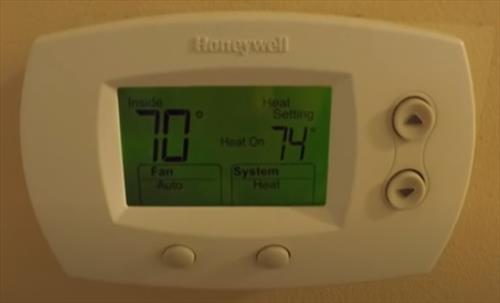
EM. and Auxiliary Heat are the same thing just worded differently.
They both use the same components called heat strips to send out heat.
The EM. heat can be set manually while the auxiliary allows the thermostat to set it automatically.
What is Normal Use of Emergency Heat?
The EM. Heat (Aux) should only come on briefly while a heat pump is in defrost mode, usually 5-10 minutes.
High Seer heat pumps are very efficient units that can bring down heating and cooling bills, but they do not work well when the temperature drops below 32 degrees Fahrenheit.
When the temperature drops too low, the outside condenser will freeze up on a heat pump, and it will go into air conditioning mode for a short while to melt the ice.
While it may sound strange for the air conditioning to be turned on in the winter, it is normal for heat pumps to do this to defrost the outside condenser.
When the unit is in defrost mode, the Auxiliary Heat or supplemental heat will turn on so cold air is not sent into a home.
Defrost mode can vary how long it is on and will depend on how much the outside condenser is frozen with ice and outside temperature.
Most defrost cycles will last roughly 5-10 minutes.
What Component is Used for Emergency Heat?
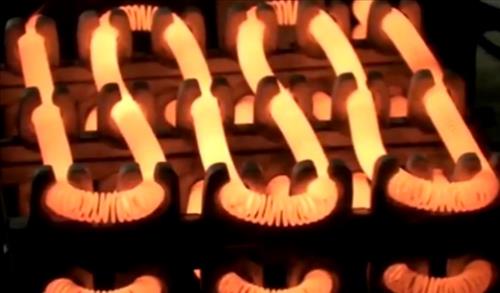
Components called heat strips are commonly used for emergency heat.
Heat strips are like a large space heater that is located in the outside condenser.
Like a big space heater, they use metal strips that are heated with electricity to become hot.
While heat strips work well, they are very inefficient and use large amounts of power.
Used for short amounts of time, they will not have a big impact on an electric bill but constantly used; they can drive up the bill.
For example, a bill without heat strips running could cost $150, but with heat strips running constantly, it could potentially be $400-$500.
Keep in mind when the heat strips are working correctly, there should not be a dramatic increase in a heating bill.
This is only an example with many variations due to different heat pump units, heat strips, and the cost of electricity.
What Happens if Emergency Heat (EM) Was Accidentally Turn On
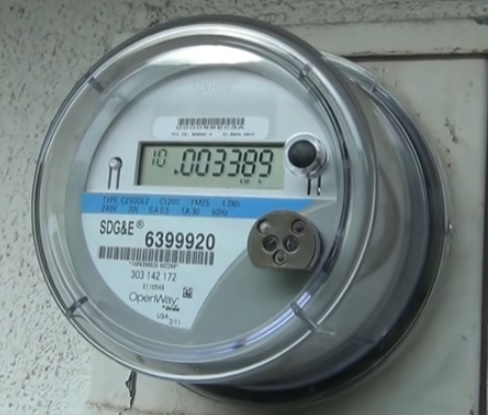
If EM. Heat was accidentally turned on the electric bill will likely be more costly than usual.
How much more costly will depend on how long it was on, the outside temperature, and the electricity cost per KW hour.
EM. Heat does not damage the HVAC system only cost more to operate compared to other heating systems.
When Should I Use Emergency Heat (EM) Heat?
The EM. Heat should be used any time a home is so cold there is a danger to the people inside.
It is not meant to be used all the time, and an HVAC tech should be called if it is on all the time.
If it is very cold, it is best to let the system run so the temperature is bearable, and call an HVAC company to get it looked at.
Summary
EM. or Auxiliary Heat is a necessary component in modern heat pump systems.
They are needed when the temperature drops too low for the heat pump to work properly and the outside condenser freezes.
When working properly, the auxiliary heat will turn on briefly to allow the outside condenser to unfreeze.
They should not be on constantly, and an HVAC tech should be called if they are on constantly.
If you live in a very cold climate and only have a heat pump, it likely is best to have a different heat source for very cold days.
Has emergency heat been used in your home? Let us know your experience below.